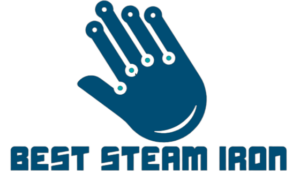Stainless is a commonplace period that is synonymous with rust-free steel elements. It’s miles a period that has been extensively used inside the cutlery enterprise and has, over the previous couple of decades, been used in many other industries. So it’s far presently describing a substantial spectrum of metallic products in the market. Components of high-quality, long-lasting, and precise stainless steel are forged to produce them.
Stainless steel is an iron alloy comprising approximately 10.5% chromium plus many different alloying products to decorate its properties, such as energy, formability, and longevity. Therefore, there are tens of stainless steel forge substances differentiated using the sorts and quantities of the alloying elements. The most typical feature of stainless steel is corrosion resistance, but there are many different properties those alloys offer.
Forging Processes Are Used For Stainless Steel
Forging is an essential manufacturing manner that enhances the mechanical properties of stainless steel, making it appropriate for worrying applications. This article explores the primary forging approaches used for stainless steel, specializing in their concepts, blessings, and ordinary applications.
Open Die Forging
Open die forging, also called smith forging, entails deforming stainless steel among more than one die that doesn’t enclose the material. The workpiece is manipulated manually or mechanically beneath a hammer or press, permitting the metal to be shaped through successive blows. This manner is good for producing huge, custom-fashioned parts with improved mechanical residences, which include shafts, rings, and flanges.
Closed Die Forging
Closed die forging, or affect die forging, entails setting chrome steel in a mold-like die, that’s then hammered or pressed to form the material. This technique produces complex shapes with tight tolerances and high manufacturing efficiency. It is suitable for excessive-quantity manufacturing and consequences in elements with great floor high-quality. Ordinary packages encompass car additives like gears and crankshafts, in addition to medical devices.
Seamless Rolled Ring Forging
Seamless rolled ring forging starts offevolved with a round preform of chrome steel, that’s pierced to create a hoop. The hoop is then heated and rolled among dies to enlarge it radially and reduce wall thickness. This technique guarantees uniform grain shape and stepped-forward mechanical properties, making it ideal for generating jewelry used in bearings, strain vessels, and big business machinery additives.
Cold Forging
Cold forging deforms stainless steel at or near room temperature, the usage of excessive-strain equipment. This process hardens the material, improving its power and hardness whilst producing components with superb dimensional accuracy and floor end. Cold forging is powerful as it removes heating fees and is usually used for high-energy fasteners, small additives for electronics, and specific scientific implants.
Hot Forging
Hot forging entails heating stainless steel to above its recrystallization temperature, making it malleable for shaping with hammers or presses. This procedure permits complicated shapes and complements the material’s grain shape, enhancing strength and reducing painting hardening. Warm forging is good for massive car components, business equipment elements, and structural factors in construction, providing each sturdiness and flexibility.
Isothermal Forging
Isothermal forging entails maintaining both the die and workpiece at an equal temperature throughout the procedure. This method minimizes thermal gradients, lowering the hazard of defects and ensuring uniform material properties. The technique results in high precision and minimum distortion, making it ideal for producing complex, high-performance components. Packages consist of aerospace turbine blades, excessive-overall performance engine components, and precision scientific implants, wherein material integrity and dimensional accuracy are critical.
Final Words
Forging approaches for chrome steel—open die, closed die, seamless rolled ring, cold, and warm forging—each offer precise advantages tailor-made to specific applications. Open die forging presents flexibility, closed die forging excels in precision, seamless rolled ring forging guarantees uniformity, cold forging complements strength, and warm forging incorporates complex shapes. Choosing the precise forging technique is crucial for optimizing the overall performance and durability of stainless steel components throughout diverse industries.




